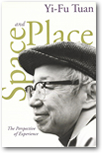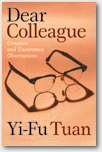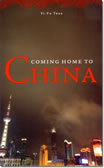what i like about him is his ability to talk optimistically about these issues without oversimplifying, going so far as to even near the poetic in drawing out the complexities… when i just felt paralysed…
Date: Sat, 29 Mar 2008 01:38:09 +0100
From: Brian Holmes
Subject: Re: <nettime> Brits in hock–or, Atlas shrugged again
To: nettime-l@kein.org
Message-ID: <200803290138.10202.brian.holmes@wanadoo.fr>
Content-Type: text/plain; charset=”iso-8859-1″
On Friday 28 March 2008 22:06:41 Dan S. Wang wrote:
> The reform era could also be called the Era of Devolution, meaning, while the central govern-
> ment maintains controls over national economic levers, the on-the-ground autonomy of the
> provincial, prefectural, and municipal governments has never been greater. It is not really a
> surprise that the greatest explosion of industry and commerce happened in the south, faraway
> from the oversight and political baggage of Beijing, where local layers of government can act
> with independence. Though the usual political machinations figured into his ascension, it is
> also not suprising that the period of great acceleration corresponded with the rise of Jiang
> Zemin, the former mayor of Shanghai, a man who learned to govern a city by always looking
> out for its own local interests.
This is getting good! When Dan uses his lived experience to bring in the micro-political play of influence and constraint on both sides of the US/China divide, then the discussion becomes truly interesting — because we’re finally getting beyond the massiveness of the global division of labor. The big trap is to consider nations or regions as unitary subjects, arrayed against each other in the global ring, when in fact they are seething molecular cauldrons of differences and strategies and needs and aspirations whose dynamics then enter into reciprocal (though usually unconscious) relations, via trade and money but also through immigration, media, communication, cultural motifs, educational processes, vastly complex and specific realities that never stop intersecting. What we have been trying to get at with Continental Drift is precisely the imbrication of scales: intimate, urban, national, continental, global. It’s characteristic of contemporary societies to find all them all intermeshing simultaneously in every possible combination of intensities, and though it’s dauntingly complex at times, it’s also just world society, the everyday experience. To make sense of the patterns is to anticipate the possibility of a new democratic politics, even across the huge gaps that are set up by the global divisions.
Something really interesting in Dan’s post, that people might not understand right off the bat, is this idea that the Reform era has been an age of Devolution, i.e. delegation of central government power to localities. The Chinese state appears monolithic, because it has kept the control of mediated appearance, i.e. CCTV and the People’s Daily and the Great Firewall. But that plus the army and the police are the major functions that made the neoliberal cut. The thing is that reform-style development was not carried out in a centralized way, through the discipline of planning, but instead by ceding the rights to lease out property to local collectivities (villages, cities, provinces), and then requiring them to meet certain targets with the resources at their disposal. This, as Friedrich Hayek taught, was a much more quick and efficient way generate and apply information, and thereby, to move straight into the classic capitalist contradictions! What this means once again is that the very motor of development — in this case, local initiative — makes geographical and social harmony impossible to simply legislate from the center. It can’t be done, because the government has simply given up authority, in exchange for unlocking the local productivity. And that is very much the trap of the neoliberal governance model, not only in China.
What that means is that the molecular processes of capitalism — on the one hand, those fiercely competitive battles among all the individual “China prices,” and on the other, the repercussions of all those individual reticences to consume that are about to be felt in the West — cannot be very easily controlled or compensated for under the neoliberal model. And as soon as the “self-organized” Hayekian initiatives of structured finance cease to ensure trans-continental coordination, what you’re gonna have is plain old chaos, almost random pressures and aleatory interplays of influences. What can be done, by those of us involved in culture and communication, is to provoke a little more awareness of this chaotic molecularity, to retrace more paths of the kind that Dan has taken the care to point out, and in this way, to make more people realize that on the other end of the commodity-chains there are also human beings in difficult situations. To the extent that long-term perturbations really are set off by the housing crash and its repercussions I think this kind of micro-narrative can be a positive contribution, one entirely within the powers of relatively ordinary people, particularly if they speak a couple languages and have a networked camera or keyboard. Let’s all try to make the chaos a bit more interesting!
best, BH





 时间 posted on: 4 February 2010 |
时间 posted on: 4 February 2010 |  发布者 author:
发布者 author: 
 分类 filed under:
分类 filed under: 
